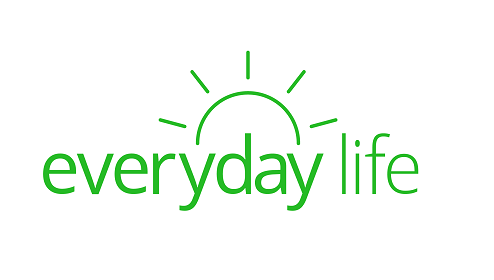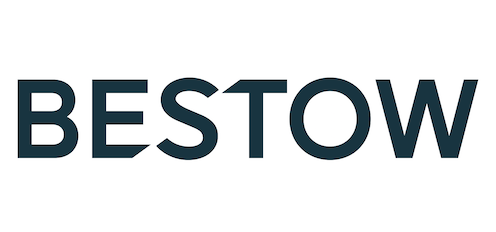As any mom knows, parenting isn’t a full-time job. It’s a 24/7 calling requiring a mother lode of skills: nursing, chauffeuring, cooking, accounting, investigating and more.
If you put a dollar sign on the typical things Mom does around the house, her market value would be $65,284, according to the 2015 Insure.com Mother’s Day Index.
Sure, that’s a pittance compared to a mom’s true value, but it’s up 3.7 percent over last year’s figure of $62,985 and 9.1 percent over the 2013 figure of $59,862. The annual index is an informal look at the common things moms do for their families and is based on the most recent Bureau of Labor Statistics median wage data. It does not include income moms earn outside the home.
Estimating Mom’s salary
Roughly a third of respondents in a recent Insure.com survey think Mom should earn more than this year’s index, and 43 percent think she should earn less. Almost a quarter of respondents think the index figure is in the ballpark. When asked how much moms should be paid for the things they do around the house, here’s how they answered:
- Nothing: 2 percent
- Up to $10,000: 4 percent
- $10,001 to $25,000: 12 percent
- $25,001 to $50,000: 25 percent
- $50,001 to $75,000: 24 percent
- $75,001 to $100,000: 17 percent
- $100,001 to $200,000: 7 percent
- Over $200,000: 9 percent
Women tend to think Mom should be paid more, with 38 percent of women in the survey saying her salary at home should top $75,000, compared to 28 percent of men who say the same. And while 22 percent of men say Mom’s tasks are worth less than $25,000, just 16 percent of women say so.
Life insurance for Mom
The topic isn’t just an idle question for debate around the water cooler. The services a parent provides are an important consideration when deciding how much life insurance to buy. Life insurance isn’t just about replacing income in the event of a wage earner’s death.
“Absolutely that’s an important aspect,” says Catherine Theroux, a spokesperson for LIMRA, a global financial research and consulting organization. Research by LIMRA shows that seven out of 10 households would face financial difficulty immediately or several months after a primary wage earner’s death.
“But life insurance also has use for paying to replace some of the household services a parent provides, like child care,” Theroux says. “The value (stay-at-home parents) bring to families would cost a lot of money if they weren’t there. It’s important that people recognize it’s not just income you’re replacing.”
Assuming grandparents will step in to pick up all the slack is unrealistic. They may not be physically or financially capable to do so.
“You have to provide a cash cushion in the event a parent passes away,” says Marvin Feldman, president and CEO of Life Happens, an industry-supported nonprofit that educates consumers about insurance.
Younger women catching up
Women still lag behind men in life insurance ownership and amounts of coverage. According to the 2015 Insurance Barometer Study by LIMRA and Life Happens, 52 percent of women own life insurance, compared to 62 percent of men. Wives are less likely to own life insurance than husbands: 47 percent versus 53 percent.
The gap, though, narrows for younger adults.
“Across the board with finances in general, the financial decisions are more equal between men and women in younger generations, particularly millennials. Women are more likely to be saving for retirement and more likely to own life insurance at the same levels as men,” Theroux says.
About 31 percent of the women and 32 percent of men who own life insurance rely solely on group life insurance, typically provided through employee benefit plans, according to the LIMRA and Life Happens study.
“Most group life is for a flat amount or minimal amount, maybe one or two times annual earnings,” Feldman says.
That’s not enough coverage for most parents, and typically the term life coverage offered through an employee benefits package ends when you leave the job, Feldman says. You may have an option to convert the group life coverage to a permanent policy, but that will cost you a lot more than term life insurance.
Term life: Less than a $1 a day
“Most people don’t understand how inexpensive term life is,” Feldman says.
The median cost of a $250,000 20-year, level-term life policy is just $150 a year for a healthy 30-year-old. When you buy individual insurance, you own the policy as long as you pay premiums. You can find ratings on leading life insurance companies with Insure.com’s Best Life Insurance Companies tool.
“If you buy one or two Cokes per day, what you’re spending on that far exceeds what it would cost to buy term life insurance,” Feldman says.
For moms, whether they’re primary breadwinners or stay-at-home parents, life insurance promises a safety net in case the unthinkable happens, and provides peace of mind so they can focus on life here and now.
The Mother’s Day Index 2015 | |||||
| Mother’s task | BLS occupation title | Hours per week | Weeks per year | Mean hourly wage | Annual Mom earnings |
| Cooking | Cooks | 14 | 52 | $10.13 | $7,371.00 |
| Driving | Taxi drivers and chauffeurs | 9 | 52 | $12.12 | $5,672.16 |
| Helping with homework | Other teachers and instructors | 10 | 40 | $19.30 | $7,720.00 |
| Taking care of the kids | Childcare Worker | 40 | 52 | $11.10 | $23,088.00 |
| Nursing wounds | Licensed practical and licensed vocational nurses | 2 | 12 | $18.43 | $442.20 |
| Cleaning up | Maids and housekeeping cleaners | 10 | 52 | $10.00 | $5,200.00 |
| Planning parties | Meeting & Convention Planners | 8 | 8 | $24.53 | $1,569.60 |
| Summer activity planner | Miscellaneous community and social service specialists, including health educators and community health workers. | 40 | 12 | $18.68 | $8,964.00 |
| Haircuts | Hairdressers, hairstylists, and cosmetologists | 0.5 | 52 | $11.90 | $309.40 |
| Shopping for the family | Personal care aides | 3 | 52 | $10.63 | $1,657.50 |
| Family finances | Accountants and auditors | 0.5 | 52 | $24.98 | $649.35 |
| Yard work | Grounds maintenance workers | 1 | 52 | $12.95 | $673.40 |
| Fixing up the house | Designers | 5 | 8 | $23.27 | $930.80 |
| Finding out what the kids are up to | Private detectives and investigators | 5 | 8 | $25.91 | $1,036.40 |
Grand total: $65,283.81 | |||||
| Wage source: Bureau of Labor Statistics | |||||










